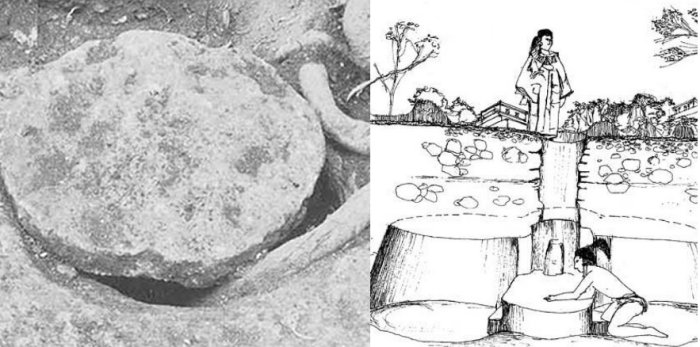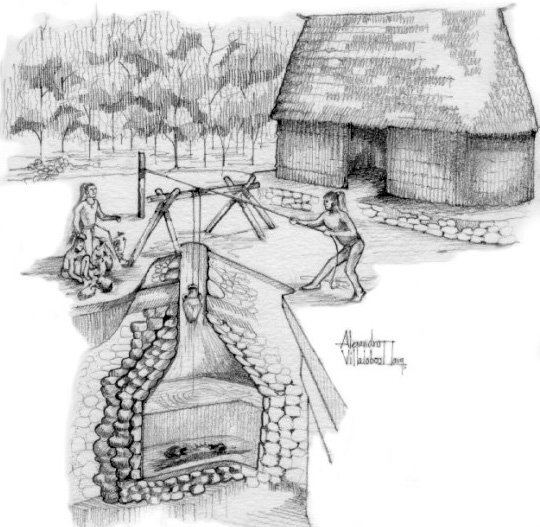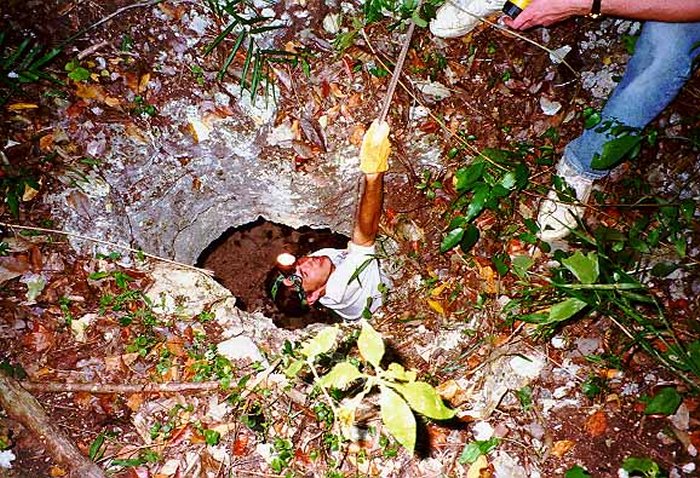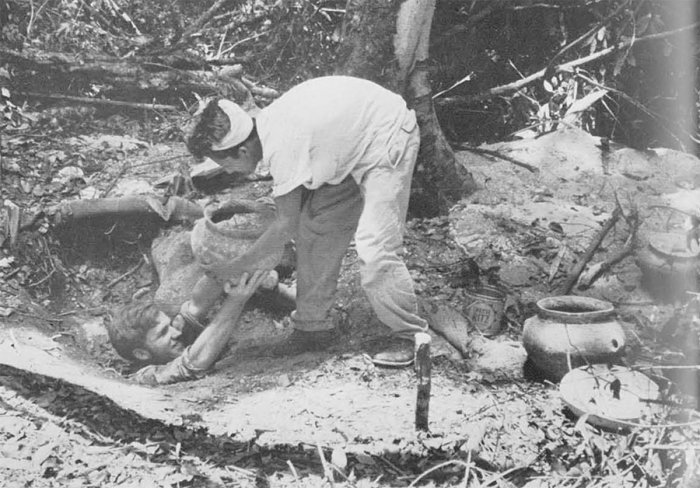Mysterious Chultuns – Ancient Underground Chambers Built By The Maya – But For What Purpose?
Ellen Lloyd - AncientPages.com - The ancient Maya of the Yucatán Peninsula constructed several underground chambers known as Chultuns.
The purpose of the chultuns is still an enigma. It’s not entirely clear for what purpose the pre-Columbian Maya took the time and effort to build these underground chambers.
Suggestions which have been proposed include their use as water cisterns, burial chambers, sweat baths, food cellars, underground religious shrines, and even some form of outdoor plumbing.
Chultuns Were Not Only Used For Water Storage
Most chultuns were bottle-shaped underground storage chambers, carved out of the relatively soft limestone bedrock. They were often plastered with a thick coating of lime stucco.
Archaeologists have discovered that most chultuns were constructed in places where canotes were absent.
Canotes are sinkholes resulting from the collapse of limestone bedrock that exposes groundwater underneath. Especially associated with the Yucatán Peninsula of Mexico, cenotes were sometimes used by the ancient Maya for sacrificial offerings.
Chultuns were often bottle-shaped.
Chultuns were rather common in southern Mesoamerica and they were most likely used to store rainwater. Many chultuns have been looted by thieves looking for valuable artifacts. The fact that the Maya still use these chambers for disposing waste makes archaeological examinations of the chultuns very difficult.
In addition, nor has any series of artifacts been found in chultuns that might provide clear-cut evidence for a simple answer.
Puleston’s Investigations Of Chultuns Reveal A Surprise
The presence of the stone covering lids points to the probability that whatever went on inside the chultuns required that they be kept closed. If the function of chultuns was the storage of food, the primary use of these lids would have been to keep out rain and possibly vermin. What sort of foods might have been stored in chultuns by the Maya?
In the 1960s, Dennis E. Puleston 1940-1978), American archaeologist and ecologist whose work ranged from experiments in reconstruction and usefulness testing of chultuns.
Archaeologists exploring a Chultun (underground cistern) of the Ancient Maya. Image credit: David R. Hixson
Puleston’s studies of chultuns revealed that despite their common name, there were different types of these man-made underground holes. In time, Puleston became convinced that chultuns were used for a variety of purposes. Some of the chultuns which were single chambers with plastered walls were constructed for water storage. However, Puleston noticed that the chultuns in the Tikal region were different in shape, not plastered, and did not hold water.
When Puleston filled a chultun with water and watched it drain away quickly. This lent credibility to his assertion that chultuns of this region were not for water storage.
After many weeks of study, Puleston noticed that the chultun offered valuable protection from vermin. Nevertheless, the underground chambers could not be used for the storage of maize, beans, or squash because these food items were consumed by insects and rodents.
There was no reason to suspect the chultuns were burial chambers. So, why did the Maya construct these enigmatic subterranean holes?
It's very unusual that artifacts are found inside a chultun. In Chultun 3F-6, ancient vessels were discovered. These turned out to be the only examples of this type yet found in Tikal. Image credit: Penn Museum
Puleston had no intentions of giving up. Determined to unravel the mystery of the chultuns, he took some nuts from a local tree and placed them in the storage chamber. Then, he waited. When he returned to the chultun 13 weeks later, he discovered the ramon nuts, not only had survived, but they were still in excellent condition and completely edible.
There are many advantages of using an underground storage system. Puleston’s discovery revealed that the ancient Maya realized some of the underground chambers were particularly effective for long-term storage of ramon nuts.
Written by - Ellen Lloyd – AncientPages.com
Copyright © AncientPages.com All rights reserved. This material may not be published, broadcast, rewritten or redistributed in whole or part without the express written permission of AncientPages.com
More From Ancient Pages
-
 Meaning Of Ancient Hand Signs We Still Use Today
Ancient History Facts | Apr 22, 2021
Meaning Of Ancient Hand Signs We Still Use Today
Ancient History Facts | Apr 22, 2021 -
 Why Are There No Unicorn Fossils In A Museum?
Archaeology | Mar 17, 2023
Why Are There No Unicorn Fossils In A Museum?
Archaeology | Mar 17, 2023 -
 Praetorian Guard: Roman Elite Unit Assigned To Protect But Also Involved In Confinement, Execution, Spying And Threats
Featured Stories | May 26, 2018
Praetorian Guard: Roman Elite Unit Assigned To Protect But Also Involved In Confinement, Execution, Spying And Threats
Featured Stories | May 26, 2018 -
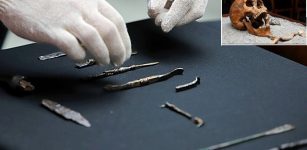 A 2,000-Year-Old Tomb Of A Roman Physician And His Medical Instruments Found In Hungary
Archaeology | May 2, 2023
A 2,000-Year-Old Tomb Of A Roman Physician And His Medical Instruments Found In Hungary
Archaeology | May 2, 2023 -
 Nakanishi Ruins: One Of Japan’s Largest Ruins Discovered In Nara
Civilizations | Aug 22, 2015
Nakanishi Ruins: One Of Japan’s Largest Ruins Discovered In Nara
Civilizations | Aug 22, 2015 -
 Mystery Of The Lost Underground City Of The Grand Canyon
Featured Stories | Nov 19, 2014
Mystery Of The Lost Underground City Of The Grand Canyon
Featured Stories | Nov 19, 2014 -
 2,000-Years-Old Warrior Graves With Iron Swords, Mysterious Square Structures, Unearthed In Bejsce, Poland
Archaeology | Nov 21, 2019
2,000-Years-Old Warrior Graves With Iron Swords, Mysterious Square Structures, Unearthed In Bejsce, Poland
Archaeology | Nov 21, 2019 -
 Selene – Greek Goddess Of The Moon And Myth About Love, Jealousy And Punishment
Featured Stories | Jan 24, 2019
Selene – Greek Goddess Of The Moon And Myth About Love, Jealousy And Punishment
Featured Stories | Jan 24, 2019 -
 Hina Matsuri Festival – Sending Dolls In Boats Into The Ocean To Celebrate Girl’s Day In Japan – Ancient Shinto Tradition
Ancient History Facts | Mar 3, 2025
Hina Matsuri Festival – Sending Dolls In Boats Into The Ocean To Celebrate Girl’s Day In Japan – Ancient Shinto Tradition
Ancient History Facts | Mar 3, 2025 -
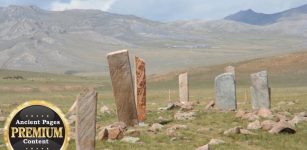 Mysterious Standing Deer Stones Of Mongolia -Their Purpose And Creators Remain Unknown
Ancient Mysteries | Jun 18, 2014
Mysterious Standing Deer Stones Of Mongolia -Their Purpose And Creators Remain Unknown
Ancient Mysteries | Jun 18, 2014 -
 Megaliths In Central France: 30 Prehistoric Monolith Stones And One Human Skeleton – Unearthed
Archaeology | Sep 11, 2019
Megaliths In Central France: 30 Prehistoric Monolith Stones And One Human Skeleton – Unearthed
Archaeology | Sep 11, 2019 -
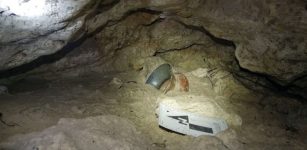 Completely Intact 2,000-Year-Old ‘Chocolatier Style’ Pot Discovered In Mexican Cave
Archaeology | Jul 30, 2022
Completely Intact 2,000-Year-Old ‘Chocolatier Style’ Pot Discovered In Mexican Cave
Archaeology | Jul 30, 2022 -
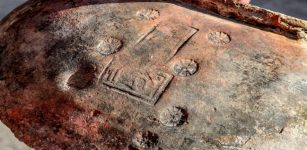 2,500-year-old Saka settlement found in Lake Issyk-Kul: could this be where St Matthew is buried?
Civilizations | Sep 4, 2015
2,500-year-old Saka settlement found in Lake Issyk-Kul: could this be where St Matthew is buried?
Civilizations | Sep 4, 2015 -
 Ancient ‘Cosmic’ Artifacts – Ancient Civilizations Used Meteoric Iron Much Earlier Than Previously Thought
Archaeology | Dec 6, 2017
Ancient ‘Cosmic’ Artifacts – Ancient Civilizations Used Meteoric Iron Much Earlier Than Previously Thought
Archaeology | Dec 6, 2017 -
 Why Did Ancient Egyptian Scribes Face Serious Health Risks?
Archaeology | Jun 27, 2024
Why Did Ancient Egyptian Scribes Face Serious Health Risks?
Archaeology | Jun 27, 2024 -
 Historian Suggests Jack The Ripper Fled To Australia Where He Met His End
Archaeology | Sep 10, 2016
Historian Suggests Jack The Ripper Fled To Australia Where He Met His End
Archaeology | Sep 10, 2016 -
 Will Lidar Survey Help To Unravel Mystery Of Ancient Staircase In Cambodia?
Archaeology | Mar 5, 2017
Will Lidar Survey Help To Unravel Mystery Of Ancient Staircase In Cambodia?
Archaeology | Mar 5, 2017 -
 Statues Of Serapis Sky God And Asclepios God Of Medicine Unearthed In Ancient City Of Kibyra
Artifacts | Nov 26, 2020
Statues Of Serapis Sky God And Asclepios God Of Medicine Unearthed In Ancient City Of Kibyra
Artifacts | Nov 26, 2020 -
 New System Will Give Stone Age Skeletons And Mummies Unique Names
Archaeology | Oct 2, 2024
New System Will Give Stone Age Skeletons And Mummies Unique Names
Archaeology | Oct 2, 2024 -
 Clurichaun – Little Naughty And Drunken Fellow Akin To Leprechaun In Irish Folklore
Featured Stories | Sep 13, 2019
Clurichaun – Little Naughty And Drunken Fellow Akin To Leprechaun In Irish Folklore
Featured Stories | Sep 13, 2019

